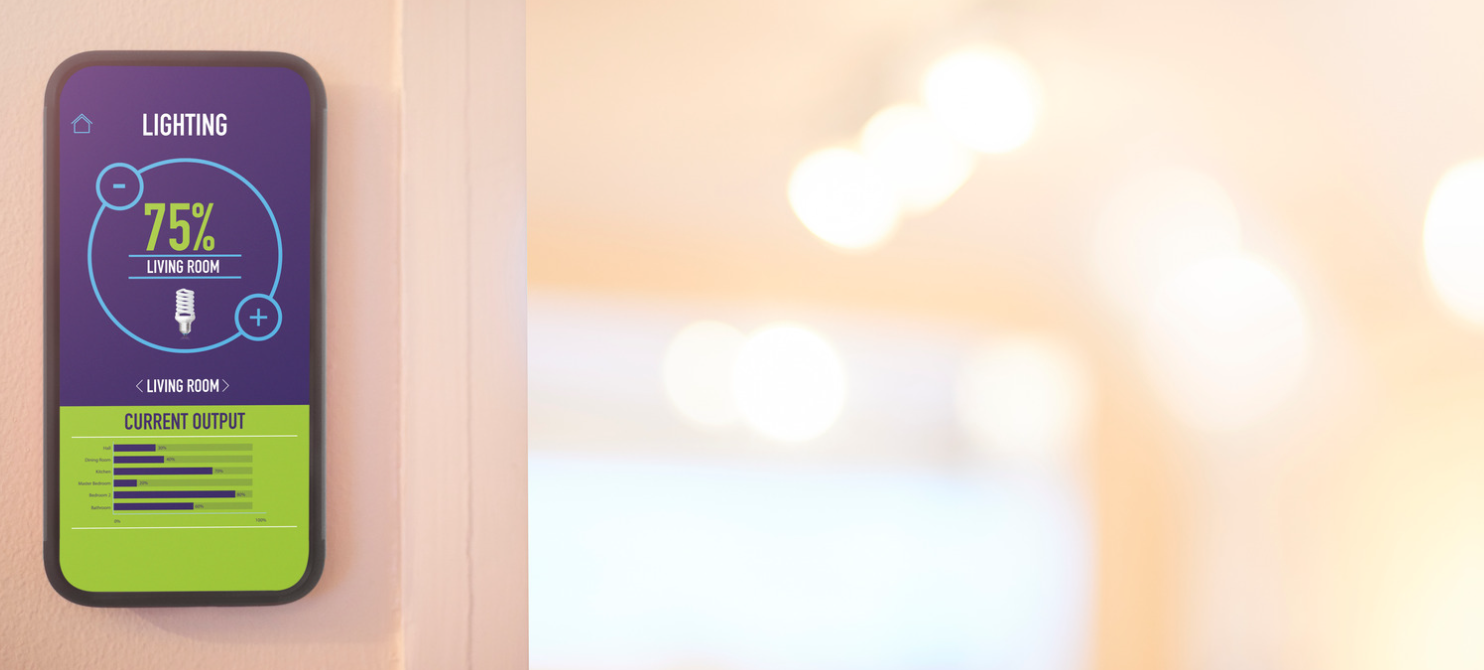Available light is measured in lumen, with a single lumen equivalent to the light output of one standard candle. When we’re looking for a certain brightness level in a room, we need to consider the usage of the space and how big the area is in order to establish how many lumens we require.
To help you understand the above, consider this. If you took a standard 100W incandescent bulb or an 18W LED bulb, you’d have a light source of about 1,500 lumens. In a small space, such as the average bathroom, that would be considered very bright. But take that same bulb and hang it from the ceiling of your nearest superstore – how well do you think it would like the space on its own? The answer is that it would do so poorly – you need more lumen to illuminate the room to the desired brightness.
To determine how many lumens a room needs, we need to know the desired lux and calculate how many lux our light provides.
Check the smart lighting solution here from various merchants.

What are Lux?
Lux is the metric version of the imperial measurement known as foot candles. To keep things simple, we’ll stick to the metric system. Lux is the measurement of how bright the light falling onto a surface is. It is calculated at 1 lux = 1 lumen / sq. meter
The typical UK household has a ceiling of around 2.5m to 3m tall. This means that light fall typically comes from approximately 2.5m above the floor. Let’s calculate how much lux our 1,500-lumen bulb will give us.
Lux = 1,500 (lumen) / 2.5 sq, meter
Lux = 1500 / (2.5 x 2.5)
Lux = 1500 / (6.25)
Lux = 240
So, now we know how many lux our 1,500-lumen bulb will give us at floor level. But is that enough?
How many lux do I need?
We believe in teaching, but if all this seems too complicated, jump over to this handy lighting calculator that can tell you precisely what you need. If you’re happy to get your mind working, here’s what to do next.
Firstly, consider the use of the room. Will it be for relaxing, like a living room, dining room or bedroom? If so, you’ll probably be happy with around 50 lux. Bathrooms and other task areas need more light; the more intensive and detailed the task, the more light should be available. For this reason, we recommend 325 lux for bathroom task areas and 525 lux for the food prep areas of your kitchen. See further down this article for a list of recommended lux values.
For our example, we’ll calculate the lux for a medium-sized living room at 50 lux. Having measured the space, we get measurements of 5m x 4.2m, giving us an area of 21 m2.
Now calculate the required lumens for the area, assuming you want even lighting throughout.
Lumens = Lux x Area
Lumens = 50 x 21
Lumens = 1050
So, in this scenario, the 100W, 1,500 lumens bulb we’ve discussed is too bright. A 75W bulb, with an output of around 1100 lumens, is the ideal light for the space.
Suggested lux for a room
| Room | Lux required |
| Bedroom (Ambient), Living Room, Dining, Bathroom (Ambient) | 54 |
| Kitchen (Ambient), Garage, Workshop | 108 |
| Bathroom or Living space (Task) | 323 |
| Bedroom (Reading) | 431 |
| Kitchen (Task), Detailed tasks (Sewing, etc) | 538 |
Conclusion
Calculating the appropriate light levels for your home requires a bit of math, but it’s not complicated. Work out the area of your room, decide on the desired lux, and then use a calculator to find an appropriately bright light source. Ensuring you have the right light at the right brightness level will create a more pleasant and inviting home.
FAQs
In most UK homes, rooms are relatively small, so for most rooms, the answer is yes, if you’re looking for a relaxing space. If you need task lighting, check the guide above to help calculate the correct lumen levels. You will want to add additional lights around the task areas for busier areas, such as kitchens.
Measure the room’s dimension, and then decide on the desired lux. For rooms aimed at relaxing, you’re looking at around 50 lux, while for task areas, you should be looking at 300 or more, with increasing lumen levels as the tasks become more detailed, such as sewing. Use a lighting calculator or the formula above to calculate the number of lumens you need.
This will depend on the amount of space you are trying to illuminate. As a ballpark figure for a relaxation-orientated room, like a bedroom, one 500 lumens bulb per 9 m2 area will suffice, so two bulbs for 18 m2, or three bulbs for 27 m2 – or you could switch to light three times as bright. A single 1,500 lumens bulb would cover the whole 27 m2 with the same lux level as the three individual 500-lumen bulbs, although the light would not be as evenly distributed.
For small spaces, relaxation-orientated spaces, like a 3m x 2.5m bedroom, 500 lumens is sufficient, but it will not be enough for any kind of task-related spaces, where the ability to see clearly will keep you safe and prevent eye strain.
Leave a Reply